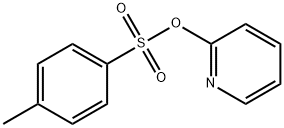
2-Pyridinyl sulphide synthesis
- Product Name:2-Pyridinyl sulphide
- CAS Number:4262-06-0
- Molecular formula:C10H8N2S
- Molecular Weight:188.25

110-86-1
893 suppliers
$9.00/5g

4262-06-0
32 suppliers
inquiry
Yield:4262-06-0 95.43%
Reaction Conditions:
with sulfur dichloride at -4 - 6; for 1.16667 h;Large scale;Temperature;
Steps:
1-5 Example 1
1. Feeding 480Kg of pyridine was metered into the synthesis kettle, stirring was started, and frozen brine was passed into the jacket of the synthesis kettle; 200Kg of SCl2 was metered into the high-level tank.2. Synthesis reaction when the temperature in the synthesis kettle was lowered to -4°C, the dropwise addition of SCl2 was started, and the addition was completed in 50 minutes, and the reaction temperature was controlled to 6°C during the dropwise addition of SCl2. After SCl2 was added dropwise, stirring was continued for 20 minutes, during which the temperature was controlled to be 6°C, the materials in the synthesis kettle were sent to the centrifuge with a pump, the centrifuge was measured and then sent to the synthesis kettle for reuse; the centrifugal filter cake was added to the alkaline washing kettle.3. Add NaOH solution add 500Kg of water to the alkaline washing kettle, add centrifugal filter cake to the kettle under stirring conditions, add 480Kg of 30% NaOH solution dropwise after stirring for 30 minutes, control the temperature to 18°C, and add the NaOH solution in 60 minutes, then add the alkaline washing kettle to the solution. The material is put into the separation tank for stratification. The separated upper layer water is sent to a pyridine separation device for distillation under reduced pressure to obtain pyridine, which is reused.4. Washing the lower layer 2-pyridyl sulfide crude product was sent to the washing kettle for washing with 300Kg tap water, the material in the washing kettle was put into the separation tank for stratification, the oil layer was put into the distillation kettle for vacuum distillation, and the water layer was used to configure the sodium hydroxide solution.5. Distillation check the tightness of the distillation system. First turn on the first-stage water ring pump of the vacuum unit, pass the heat transfer oil into the jacket of the distillation kettle, adjust the vacuum degree to 0.094MPa, and put the condensate into the crude product receiving tank; when the gas phase temperature reaches 100 , turn on the vacuum unit three Roots vacuum pump, when the vacuum degree exceeds 0.10MPa and the gas phase temperature reaches 119°C, it will be switched, and the fraction will be switched to the finished product receiving tank. The condensate with gas phase temperature of 120-135 is the finished product. When it is observed that the temperature in the distillation kettle increases by more than 220°C, the gas phase temperature begins to drop at 135°C, and the droplets in the viewing cup at the lower end of the condenser flow dropwise rather than linearly, turn off the third-stage Roots vacuum pump first, and then turn off the first-stage Roots vacuum pump. The water ring pump continues to work. When the temperature in the distillation still is 38°C, the first-stage water ring pump is turned off. The residue in the still is released.The content of 2-pyridyl sulfide was analyzed by gas chromatography, the purity was 99.12%, and the content of 2,2'-dipyridine disulfide in the product was 0.35% (GC) to obtain 345Kg of finished product.Calculated as sulfur dichloride, the yield is 95.43%.
References:
CN114213321,2022,A Location in patent:Paragraph 0016-0045

5029-67-4
301 suppliers
$6.00/1g

4262-06-0
32 suppliers
inquiry

3847-19-6
18 suppliers
inquiry

4262-06-0
32 suppliers
inquiry

65007-00-3
52 suppliers
$12.00/1g

4262-06-0
32 suppliers
inquiry

57785-86-1
1 suppliers
inquiry

4262-06-0
32 suppliers
inquiry